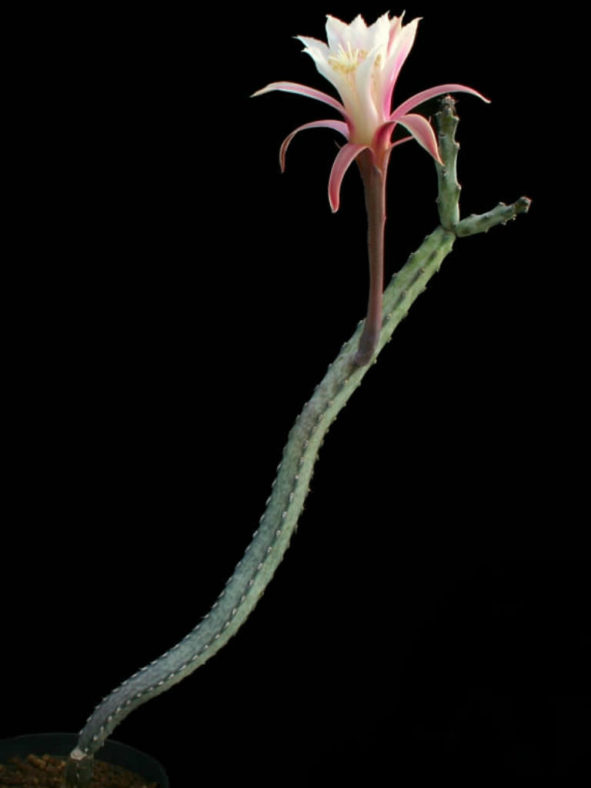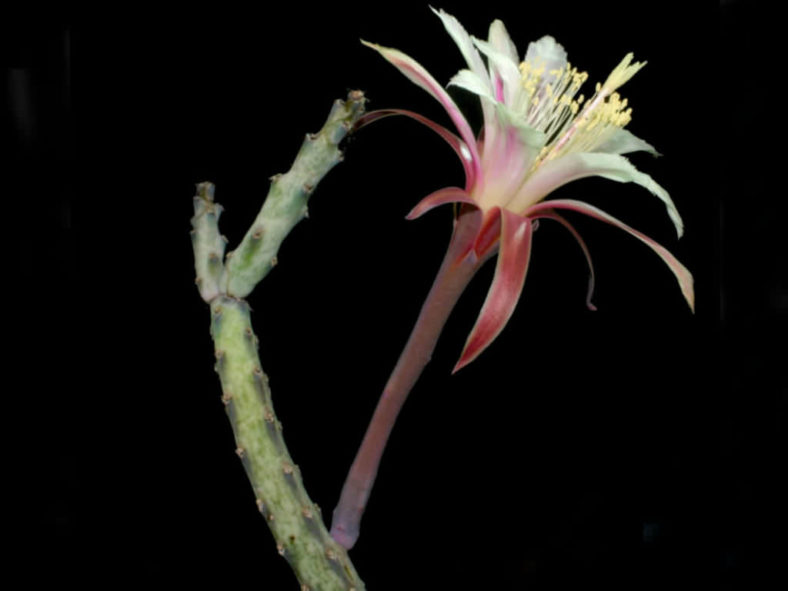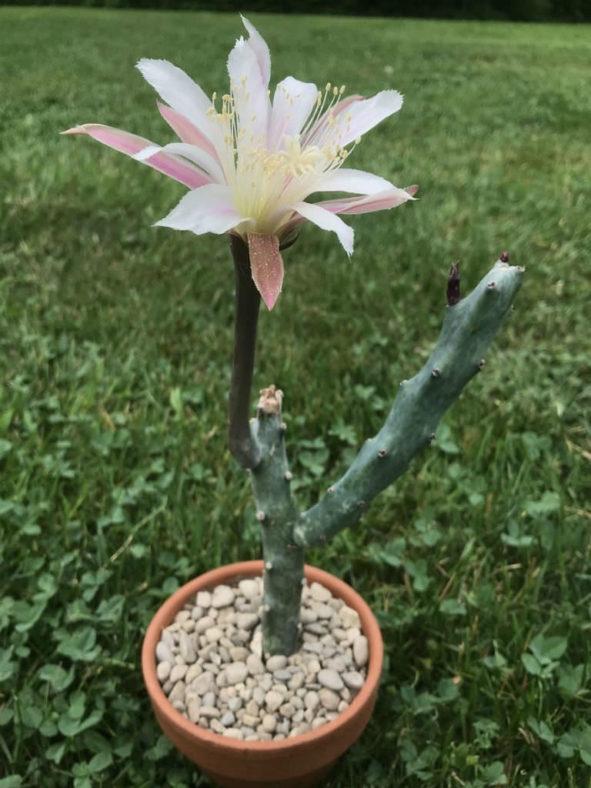Scientific Name
Cereus spegazzinii F.A.C.Weber
Common Name(s)
Moonlight Cactus, Night-blooming Cereus
Synonym(s)
Monvillea spegazzinii, Piptanthocereus spegazzinii
Scientific Classification
Family: Cactaceae
Subfamily: Cactoideae
Tribe: Cereeae
Genus: Cereus
Etymology
The specific epithet "spegazzinii (speg-uh-ZIN-ee-eye)" honors Carlo Luigi Spegazzini (1858-1926), an Italian-born Argentinian botanist and mycologist.
Description
Cereus spegazzinii, also known as Monvillea spegazzinii, is an erect, sloping, or almost creeping cactus that grows and branches abundantly. The stems are cylindrical, blue-green, and can grow up to 6 feet (1.8 m) long and 2.6 inches (6.5) cm in diameter. They have 3 to 5 ribs with very wide areoles. The young plants usually have 2 to 3 blackish spines, while the older ones have one central spine and five radial spines measuring up to 0.6 inches (1.5 cm) long.
This cactus is one of the most prolific bloomers of all cacti. The flowers appear from spring to summer and open at night. They have reddish outer perianth segments and white inner ones and can reach up to 5.2 inches (13 cm) in length and 3.6 inches (9 cm) in diameter. The fruits are greenish to pinkish with remnants of the perianth.

Hardiness
USDA hardiness zones 10a to 11b: from 30 °F (−1.1 °C) to 50 °F (+10 °C).
How to Grow and Care
Like most cacti, Cereus are fairly low-maintenance and hardy. Ensure they receive enough water without becoming waterlogged, especially during the summer, and fertilize them for the best results. If the roots have become black or overly soft, the cactus could be experiencing root rot. Cut away the affected parts and replant. Most gardeners interested in cacti should be able to cultivate these without much problem.
If your Cereus outgrows its container, it may become necessary to repot it. If so, ensure the soil is dry and then remove the pot. Knock away old soil, prune away rotted or dead roots, and then replace it in a new pot and backfill it with new soil. Do not overwater cacti planted in new pots, as this can lead to root rot. The cacti should be left dry for about a week and then watered lightly.
These cacti propagate pretty easily from cuttings. Simply sever a branch and replant in moist, well-drained soil.
Learn more at How to Grow and Care for Cereus.
Origin
Cereus spegazzinii is native to Argentina, Bolivia, Brazil, and Paraguay.
Forms and Cultivars
Links
- Back to genus Cereus
- Succupedia: Browse succulents by Scientific Name, Common Name, Genus, Family, USDA Hardiness Zone, Origin, or cacti by Genus
Photo Gallery
Click on a photo to see a larger version.



